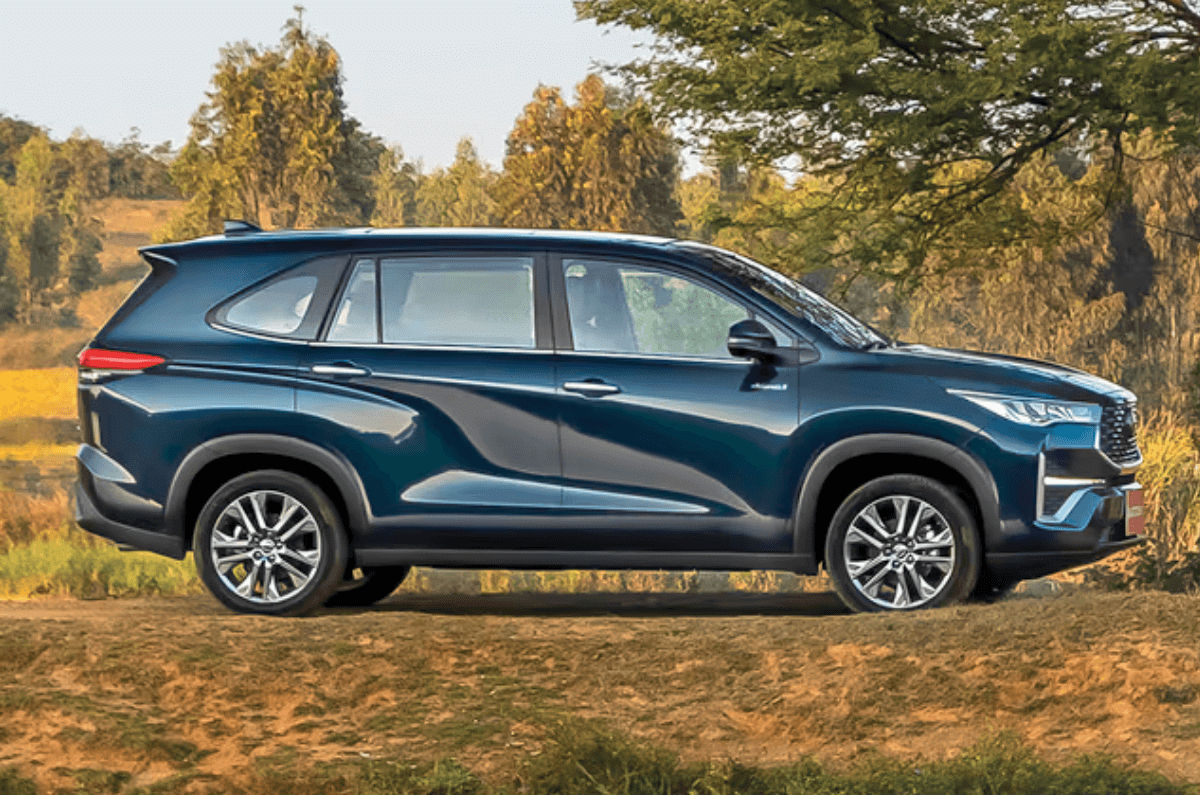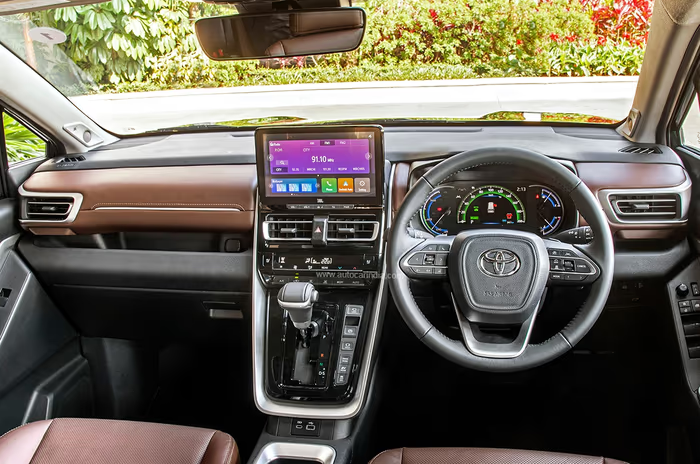
To build on Innova’s strong brand value, Toyota launched the Hycross in India about two-and-a-half years ago. Unlike the diesel-only Crysta, it offers both petrol and hybrid powertrains, and its cabin feels noticeably more premium, thanks to its richer features. Currently, the only direct rival to the MPV is its badge-engineered sibling, the Maruti Invicto. Below are three reasons to consider the Toyota Innova Hycross, and two reasons it might not be the right fit for you.
1. Extremely smooth and fuel-efficient hybrid powertrain
ARAI-rated mileage of 23.24kpl.

The Innova Hycross hybrid is powered by Toyota’s refined 2-litre four-cylinder petrol engine, complemented by an electric motor that draws energy from a 1.6kWh battery; transmission duties are handled by an eCVT. By default, the Hycross starts on battery power and calmly potters around, but upon hard acceleration, the petrol mill seamlessly takes charge. Speed build-up is linear, with no sudden surges.
While petrol and hybrid Innova Hycross models share this naturally aspirated block, it’s the latter that opts for a more fuel-efficient Atkinson cycle (intake valves remain open for a longer time during the compression stroke for a lean air-fuel mixture). Together, the 184hp, 206Nm hybrid-petrol setup delivers an impressive ARAI-rated mileage of 23.24kpl, a whopping 7.11kpl higher than the Hycross petrol.
2. Spacious cabin
Well-cushioned seats for optimal ride comfort.
Equally impressive as the claimed mileage is the generous cabin space of the Innova Hycross. That holds even for the third row, which is usually seen as best for kids or short journeys. Moving forward to the middle row, Toyota offers part-electric captain chairs with ottomans for that extra level of comfort in the seven-seat layout. Passengers here will also appreciate the window shades, dedicated climate control, and large panoramic sunroof that fills the cabin with light and enhances the airy feel.

Strong hybrid battery placed under the front passenger seat.
The hybrid battery’s placement under the front passenger seat means legroom stays unaffected for the one seated behind, and unlike some hybrids, this also translates into an uncompromised boot space as well. But it gets even better up front as the broad, well-cushioned seats are ventilated, as well as 8-way electrically adjustable.
3. Car-like driving manners
Monocoque frame; firmer suspension setup than the Crysta.

The Innova Hycross’ monocoque frame aids in controlled body movements, especially for an MPV of this size. And a slightly firmer suspension setup than the Crysta, it drives with a lot more confidence. The longer wheelbase gives the Hycross a planted highway ride, but the real highlight is its power steering (unlike the Crysta’s hydraulic unit), making manoeuvring and parking the 4,755mm-long MPV effortless.
While the Toyota Innova Hycross shines in these three areas, there are a couple where it doesn’t score as high, as mentioned below.
1. Diesel-like engine punch missing
Linear acceleration.

Since the hybrid powertrain has a linear acceleration, as noted in our Innova Hycross review, some may miss the meaty mid-range torque rush of the turbo-diesel. Also, the e-CVT feels at ease when driven calmly, but with aggressive driving, especially at highway speeds, it makes the engine sound strained and out of its comfort zone. Its front-wheel drive layout might deter those living in hilly areas, where the Crysta’s rear-wheel drive setup offers an edge.
2. Some interior plastics feel cheap for Hycross’ price
Fit-finish and quality of some parts seem out of place.

The Hycross MPV is priced between Rs 19.09 lakh and Rs 31.34 lakh, ex-showroom, with the more bought hybrid variants starting at Rs 26.31 lakh. Considering this price range and its premium positioning, the fit-finish and quality of some plastic trims inside seem out of place. That said, this is a small drawback easily outweighed by the Hycross’s overall strengths.
Also see:
BMW iX1 LWB: 3 reasons to buy and 2 not to


